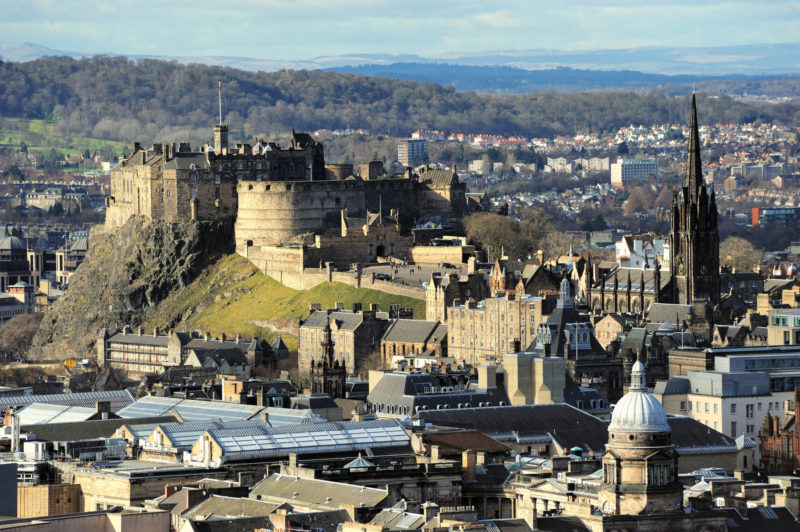Scotland is seeking to dramatically cut its reliance on fossil fuels for cars, energy and homes after setting a radical target to cut total climate emissions by 66% within 15 years.

In one of the world’s most ambitious climate strategies, ministers in Edinburgh have unveiled far tougher targets to increase the use of ultra-low-carbon cars, green electricity and green home heating by 2032.
The Scottish government has set the far higher target after its original goal of cutting Scotland’s emissions by 42% by 2020 was met six years early – partly because climate change has seen winters which are warmer than normal, cutting emissions for home heating.
The new strategy, which is expected to cost up to £3 billion a year to implement and is closely linked to a new renewable energy programme due to be published this month, will call for:
- 40% of all new cars and vans sold in Scotland to be ultra-low-emission by 2032, with 50% of Scotland’s buses to be low-carbon.
- A totally carbon-free electricity sector based entirely on renewable energy sources by 2032, when Scotland’s last nuclear power station will close.
- Four out of five of Scotland’s two million homes to be heated using low-carbon technologies.
- The repairing of 250,000 hectares of degraded peatlands, which store a total of 1.7 gigatonnes of CO2 in Scotland.
- At least 30% of Scotland’s vital publicly owned ferry fleet to be low-carbon, powered by hybrid engines.
Enriched by a vast £727 billion sovereign wealth fund built up from its North Sea oil and gas industries, Norway has set Europe’s most ambitious emissions reduction target so far, committing itself to become carbon neutral by 2030 – two decades earlier than planned.
But that target, a cut equal to 53 million tonnes of carbon equivalent, will rely very heavily on carbon trading: paying other countries to cut their emissions more deeply or buying carbon credits from industries which are cutting emissions.
Scotland’s 66% target, on the other hand, will be based on real-terms cuts in domestic emissions, although ministers admit there are serious policy and financial challenges raised by the UK’s decision to quit the EU. Nor does the strategy include Scotland’s substantial offshore oil and gas industry, or its oil exports, only covering onshore emissions.
The Scottish environment secretary, Roseanna Cunningham, told MSPs at Holyrood on Thursday that the proposals “represent a new level of ambition which will help maintain Scotland’s reputation as a climate leader within the international community”.
But Cunningham said that Scottish businesses, homeowners and commuters – whom ministers privately see as too reluctant to change their behaviour – now had to take a far greater share of the burden.
Until now, a large proportion of Scotland’s decline in CO2 emissions has been driven by the sharp shift to renewable energy from windfarms, an EU-wide move away from coal-powered energy, EU emissions trading and worldwide technical advances, particularly on car engine efficiency.
Scottish drivers will now be asked to quickly start taking up electrically powered or hybrid cars; homeowners will be encouraged to strip out gas-fired boilers at home and improve insulation; farmers will be asked to cut the methane and nitrogen climate gases, and Network Rail will be paid to electrify 35% of Scotland’s rail network.
Richard Dixon, chief executive of Friends of the Earth Scotland, said he applauded the government’s ambition, but it still overlooked substantial issues, particularly an economic strategy wedded to roads and aviation. The Scottish government wants to abolish air passenger duty to increase flying in a bid to stimulate growth.
“It paints a very good vision of what a low-carbon Scotland could look like in 2032,” he said. “But there are clearly areas where there has been resistance and policies either aren’t going far enough or aren’t credible.”
Ministers should put far greater stress on forcing motorists out of their cars and on to far more energy-efficient public transport or bicycles, Dixon said. Farmers should be forced to accept compulsory testing for overuse of climate-damaging fertilisers. There had to be far tougher standards on home energy efficiency.
The 2032 target will include legally binding annual targets first agreed by the Scottish parliament in 2009. Officials estimate that hitting that goal will cost annually about 2% of Scotland’s GDP, which is worth about £147 billion a year.
More offshore windfarms and marine energy plants will be needed, as will hundreds of thousands of electrical car charging points, alongside the cost of more than 1m new home heating systems.
But ministers believe that improving air quality, cutting fuel poverty, increasing home insulation, and reducing road accidents through less use of cars will save public money by cutting NHS spending and early deaths, as well as boosting economic output.
They worry about the impact the UK’s departure from the EU will have on continuing pan-European funding and investment in the low-carbon economy, and the EU emissions trading regime, which plays a large part in reducing emissions.
The current EU emissions targets are a 40% cut by 2030, while the UK government’s goal is to cut emissions by 50% by 2025, with an 80% target set for 2050.
Officials have previously acknowledged that policies and industries under the Scottish government’s control cover about 30% of Scotland’s overall emissions; the remainder is influenced or controlled at UK and EU level, and international industries.
By Severin Carrell, Scotland editor (The Guardian of London)
